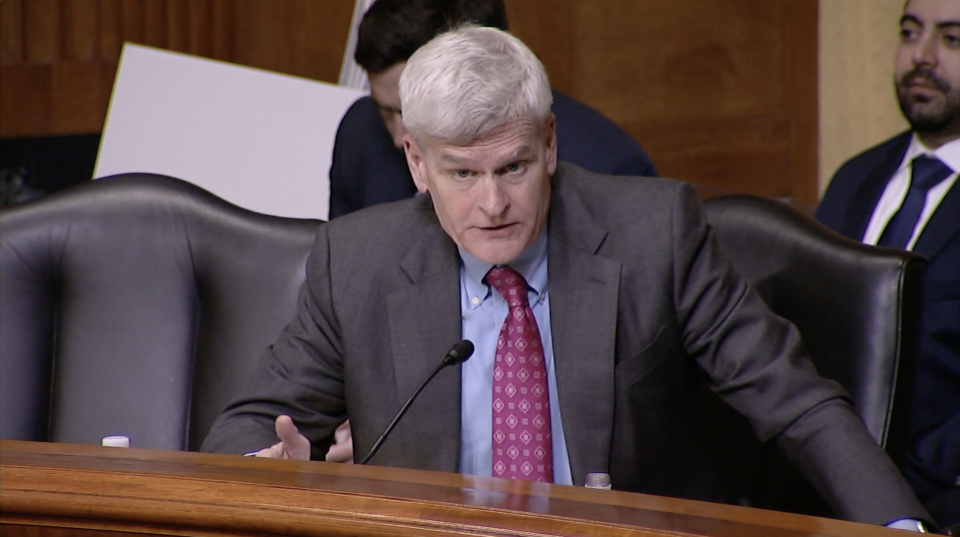
St. Mary school takes a hit
September 10, 2013
Doctors say Wright cleared for trial
September 10, 2013Officials say they are still working out a few bugs, but have branded as successes smartphone applications that report real-time crime information, allow citizens to send in tips – including photos – and have a look at locals who are wanted by police.
“We are going to keep it updated,” Houma Police Chief Todd Duplantis said of the new Houma PD App for iPhone and Android. “We have gone through a process of training our dispatchers. The ultimate goal is that if there is a burglary in progress on High Street the dispatcher is going to send it out, with information on descriptions of who is wanted.”
Chief Scott Silverii said a similar app developed for his jurisdiction performs the same tasks. Both chiefs say the public response has been overwhelming. The phone apps are used in concert with Facebook and Twitter applications the two departments employ. Other law enforcement agencies have developed Facebook pages and are also seeking innovative ways of using them to get their message out to the public, as well as to obtain information people wish to send them.
The combination of social networking tools, Duplantis said, has resulted in 20,000 hits on the department’s news releases, and 800 views of information on people wanted by authorities.
“This all stemmed from our neighborhood watch groups. He said that in 2008 an elder woman was robbed on High Street outside of her home.
“By the time we got it out to the media and the public it was two or three days later,” he said, causing investigators to lose critical time that might have resulted in leads being generated.
“The watch groups asked how we could tell them about incidents in real time,” Duplantis said. “They told us we don’t want to know two or three days later, we want to know when it is happening.”
Members of neighborhood watch groups were among the first people to download the smart phone apps, the police chief said.
“We get a lot of tips related to drugs,” he said, noting that in some cases when people send tips on drug activity they also send along photos they have taken with their phones.
“We got a tip last week of a person at the Popeye’s fried chicken involving drugs, she was there when the officers got there and they made an arrest on it.”
Among the tips Duplantis shared was one where the informant provided a name and location of someone on parole, who had an active warrant.
“He owns a white Crown Victoria with switched tags he is a scumbag and a leach,” the tip reads.
Tips are not disseminated to the public, Duplantis noted.
The app also allows members of the public to commend officers for a job well done, and Duplantis said he has had a number of those reports, something he uses to increase officer morale.
Silverii said that Thibodaux is in the process of developing a procedure manual so that social media policies and practices can be properly passed on to officers and other staff members. Future chiefs and the officers who work under them, he said, will not have to “reinvent the wheel.”
Thibodaux Cpl. David Melancon has been helping Silverii with development of social media protocols and the department’s phone app. Twitter and Facebook, Melancon said, are being used not only to bring hard information to the public, like arrests and people wanted, but also day-to-day “soft” messages like human interest items on officers, as well as close-up looks at routine patrol activities.
“Transparency is one of our goals,” said Melancon, who invites members of the public to to ride-alongs with officers and to send tweets out as they go through the experience.
Surveys of national trends show that the increasing use of social media by local police departments puts them at the head of the class nationally.
A 2012 study by the LexisNexis research group showed that only half of the 1,200 federal, state and local police agencies surveyed were using the social media tools.
There were indications, however, that law enforcement executives are getting the message that social media can help their efforts.
The poll showed that 67 percent of law enforcement officials surveyed believe social media helps solve crimes more quickly. On the enforcement end, law enforcement chiefs reported that 87 percent of the time search warrants utilizing social media posts to establish probable cause hold up in court when challenged.
“Investigation and analysis of social media content provides a huge opportunity in terms of crime prevention and offender apprehension,” said Samantha Gwinn, Government Solutions Consultant for LexisNexis. Gwinn has 12 years of experience as a crime analyst at local and federal law enforcement agencies, and believes strongly that “as law enforcement personnel continue to participate in formal training and gain an increased comfort level with the power and scope of social media, as well as its limitations, the value it provides will continue to rise.”
Local officials say that holds true for them, and that as time goes on they will find ways to further use their apps, widgets and gadgets employing new media to increase effectiveness.
“Everything we do it is not random, it is specifically chosen,” said Melancon. “We are not just tapping into a trend. Saying you are transparent and accountable is nice. How do you implement that? With social media we show the community what their police department is doing day in and day out. People want to communicate with their police officers; they want to believe in their police department. Go to our site and see the comments and the likes people are giving us. It shows that people are getting involved and that we are opening doors.”










